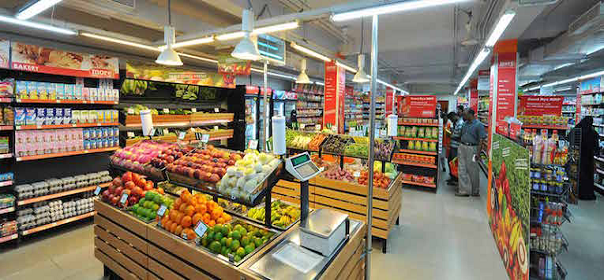Companies in the commercial and institutional fields are always looking for ways to reduce costs and increase profits. Over 50% of the overall utility expense in a Supermarket can be attributed directly to the Refrigeration, Lighting and HVAC (Heating, Ventilation, and Air Conditioning) Systems. Certain types of Energy Management Systems studied herein indicate savings at some locations, yet little or no savings in other locations with the same systems in operation.
Energy efficiency solution for supermarket
Strategic energy optimisation methods, however, can transition an oversized HVAC system into a more “right-sized” system that adjusts to dynamic occupancy levels that fluctuate during the day or week. These methods help lower operational costs, which can be reallocated to other areas.
Building Automation Systems
A building automation system (BAS) not only puts the building operator in greater control of the facility’s temperature and comfort – but also allows the operator to track inefficient energy expenditures.
Not just limited to monitoring and adjusting temperatures, a BAS also measures ambient light, occupancy levels, indoor air quality and humidity to fine-tune its program and control lighting circuits, comfort setpoints, fresh air and energy usage more effectively.
For example, if the BAS detects no one is occupying a certain zone, it may adjust accordingly, even if the standard program dictates otherwise. A BAS used throughout a particular building, over time, may actually learn occupant habits. It will then create a program to meet energy needs in the most efficient way possible.
Supermarkets and grocery stores constantly strive for greater energy efficiency and lower operating expenses.
The food retail industry is continuously expanding with new construction and extensive store remodelling, and it is essential to incorporate energy management and sustainable solutions to improve the efficiency and operation of stores.
Benefits for grocery stores & supermarkets include:
- Maximise the energy savings of every device and entire stores – Monitoring the energy consumption of individual devices, systems, and assets identifies inefficiencies, improper usage, and opportunities for savings.
- Detect refrigeration failures before they occur -Predictive maintenance recognises unusual energy usage patterns and sends alerts for service to avoid the high costs of shrinkage of spoiled food items.
- Improve operations and promote behavioural change-Educating on-site staff with comprehensive energy consumption data promotes process improvement and engagement in energy efficiency projects.
- Monitor multiple systems from one intelligent dashboard – Track the energy profiles of HVAC, refrigeration, lighting, and facility equipment within a single system that monitors, benchmarks, alerts, and provides insights for process improvement.

